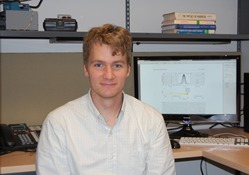Program Information
Compton Scatter Imaging for IGRT Assessed Through a Novel Analytical Simulation Method
K C Jones*, G Redler , A Templeton , D Bernard , J C H Chu , J V Turian , Rush University Medical Center, Chicago, IL
Presentations
TU-H-605-3 (Tuesday, August 1, 2017) 4:30 PM - 6:00 PM Room: 605
Purpose: Compton scatter imaging is a promising technique that uses the photons scattered during radiation therapy to image the irradiated volume. To assess the expected scatter images, a rapid analytical simulation method was developed, validated by Monte Carlo, and applied to a lung tumor 4DCT.
Methods: An analytical method was developed to simulate the scatter images collected by an ideal pinhole collimator. In the analytical method, ray-tracing is combined with a Taylor-expansion-corrected FFT convolution/superposition algorithm to propagate multiple-scattered photons. The analytical simulated images and spectra from three phantoms were compared to MCNP6 calculations. The scatter image of a 3 cm-diameter lung tumor was simulated from multiple detection angles, for multiple field sizes, and for each breathing phase in an orthogonal arrangement.
Results: The analytical images match those resulting from Monte Carlo, and they were simulated up to ~350x faster. If an ideal detector is placed perpendicular to the direction of a clinical beam delivering 10 cGy to dmax in a water-like phantom, 1.4 x 10⁷ scatter photons (peaked at 150 keV) are expected to pass through a 5 mm-diameter pinhole placed 18.5 cm from isocenter. A lung tumor is clearly identifiable in the scatter image simulated from multiple detector positions. Reducing the irradiation field size from 10 x 3 cm² to 1 x 3 cm² increases the contrast ratio of the lung tumor from 0.18 to 0.69. From the 4DCT-based simulations, tumor movement is observable in the scatter images.
Conclusion: An accurate and fast scatter imaging analytical simulation technique was validated with Monte Carlo. 4DCT-based simulations show that scatter imaging is a promising technique for lung tumor tracking. The analytical method may be useful for other techniques where modeling Compton-scattering is important, such as in SPECT and proton prompt gamma imaging.
Contact Email:
